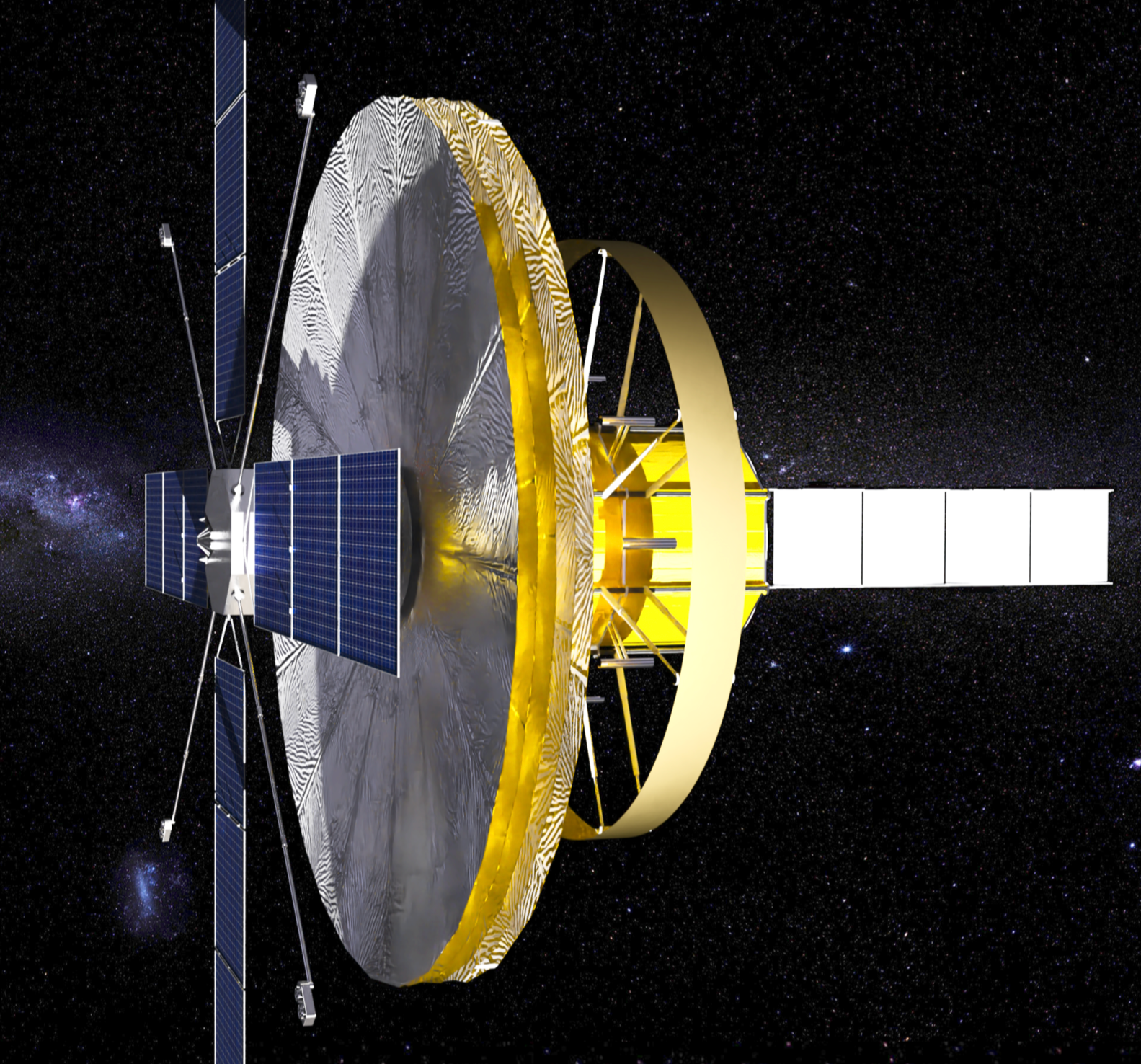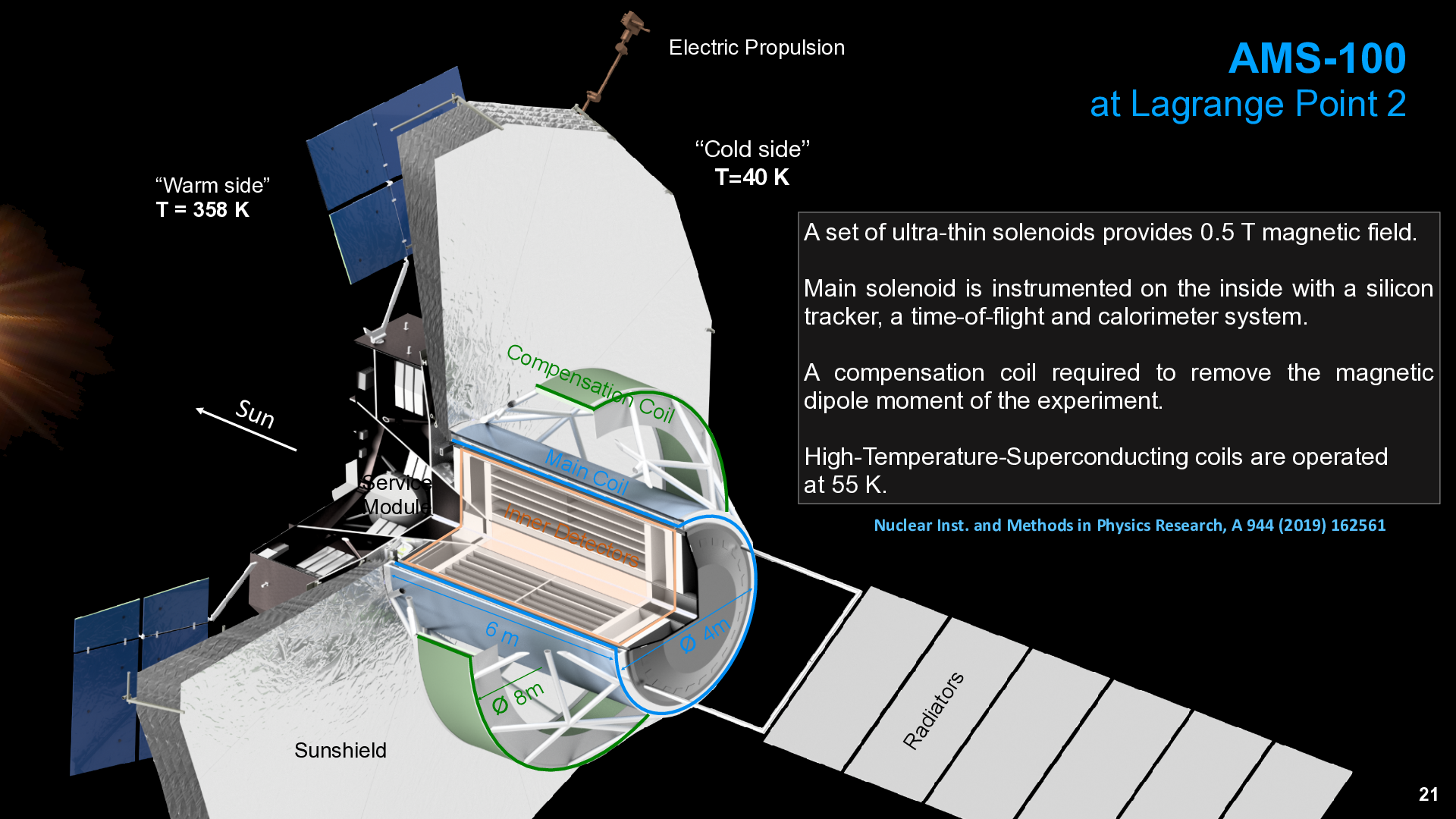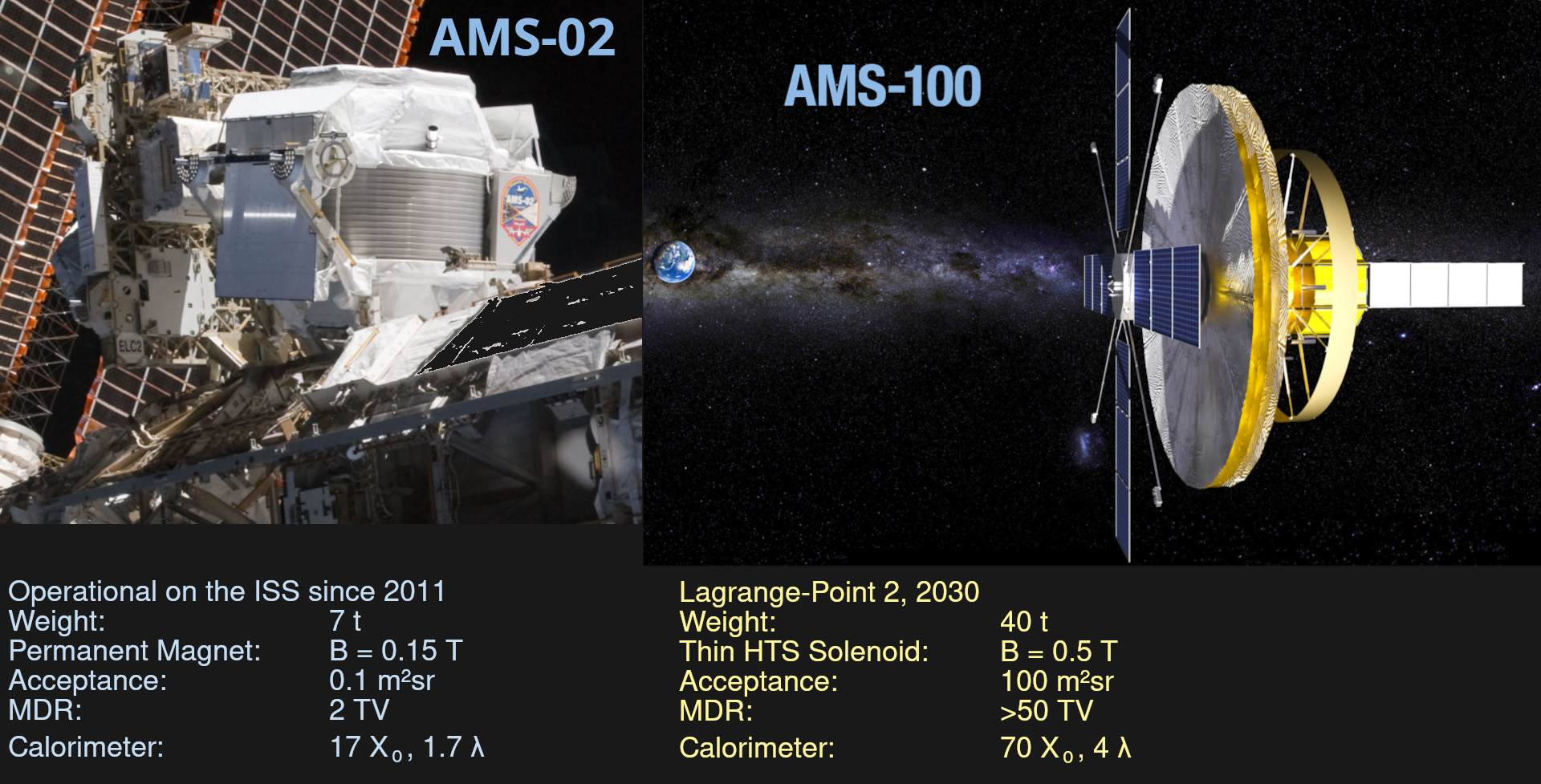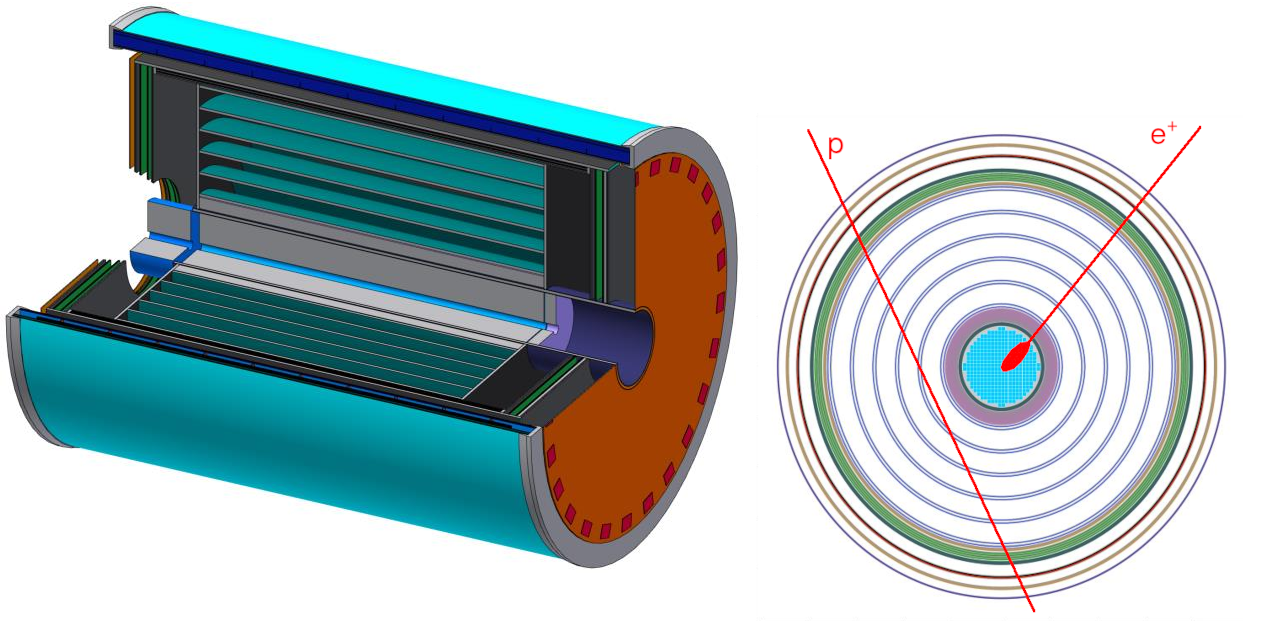AMS-100 Experiment at L2
Prof. Stefan Schael, Dr. Thomas Kirn, Dr. Thorsten Siedenburg

A Magnetic Spectrometer with an acceptance of 100 m²sr (AMS-100) is to be installed on a satellite and operated for 10+ years at Lagrange Point 2 (L2). The purpose of this magnetic spectrometer is to significantly extent the energy reach, geometrical acceptance and sensitivity to cosmic rays and cosmic anti matter of the present AMS-02 experiment on the International Space Station. With a geometrical acceptance of 100 m²sr, a maximum detectable rigidity of 100 TV and a calorimeter with a depth of 70 radiation lengths and 4 nuclear interaction lengths AMS-100 will provide direct measurements of cosmic ray spectra up to the PeV scale, i.e. up to the cosmic ray knee. Compared to AMS-02 the sensitivity to cosmic anti-matter will be improved by a factor 1000. The energy reach for precision measurements of cosmic ray electrons, positrons and anti-protons will be increased by one order of magnitude compared to AMS-02, up the scale of 10 TeV.
The magnet design is based on new high temperature superconductors to build a large thin coil solenoid with a magnetic field of 0.5 Tesla to be operated at 50-60 Kelvin. The thin coil of the magnet will also act as a well localized converter for photons allowing in combination with the calorimeter precision measurements of TeV gamma rays with excellent angular and energy resolution with full sky coverage at any moment in time.
Due to the dipole-moment of the large solenoid AMS-100 can not be operated at low earth orbit.

Both the US space agency NASA and the China Aerospace Science and Technology Corporation CAST have announced rockets (SLS Block 2 and Long March 9) for the time 2025-2030 which can lift 130 tons to low earth orbit and 45-50 tons to L2. This will open a new window for particle astrophysics and TeV gamma astronomy. In order to have a detector concept ready for a launch in 2030 the work on the design of the instrument has to start already now.
A comparison of the key performance parameters of AMS-02 and AMS-100 is given below:

The main detector elements of AMS-100 are shown in 3D and in a cross section view below:

The functions of these elements are shown in the radial cross-section of the barrel below:

The most recent description of AMS-100 can be found in Ref. [1]. Details on the ToF and SciFi tracker development can be found in Ref. [2].
The full detector description is written up in [3].
[1] S. Schael, "AMS-100 - The next generation Magnetic Spectrometer in Space", CERN Detector Seminar, 04.11.2022 (Indico, PDF)
[2] T. Kirn, "Cryogenic Tests of Time of Flight and Scintillating Fiber Tracker Prototypes for the AMS-100 experiment", Vienna Conference on Instrumentation, 19.02.2025 (Indico, PDF)
[3] T. Kirn, "The AMS-100 experiment: The next generation magnetic spectrometer in space", Nuclear Inst. and Methods in Physics Research, A, 01.10.2022, (Paper, PDF)